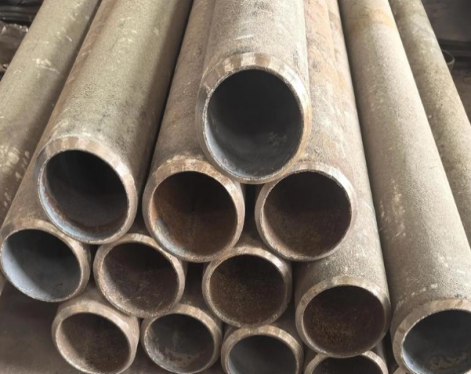1.What is AR500 steel plate?
AR500 steel plate is a special type of steel plate with high strength and high wear resistance, mainly used in high wear applications such as mining equipment and concrete handling. This steel plate is widely used in multiple fields due to its excellent performance.AR450 and AR400 are very similar, AR500 steel is a special type of wear-resistant steel. It has a surface hardness of 477-534BHN. In contrast, it is a high-carbon steel alloy with higher resistance to impact and sliding wear. However, this increase in strength and wear resistance will reduce the ductility of the steel.
2.Features of AR500 steel plate
Wear-resistant steel plate grades are used in high wear applications such as mining equipment and concrete handling.●Surface hardness ranges between 470-540 BHN.
●Excellent resistance to sliding wear, friction wear and heavy wear.
●Withstands high impact stresses even at extremely low temperatures.
●Different mills have different compositions and hardening processes. A factory test report is provided with each order.
3. Why is it called AR500 steel?
AR500 steel is not a brand name, but a type of steel. There are many manufacturers of it. The letters AR stand for wear resistance. 500 refers to the hardness of the steel, but AR500 scores 477-555 in hardness tests.
4.Does AR500 steel rust?
Yes, AR500 steel can rust. It is made from a high-strength, low-alloy steel that is hardened through a process known as quenching and tempering, which enhances its wear resistance and impact strength. However, like most carbon steel sheets, AR500 does not have the same level of inherent corrosion resistance as stainless steels or other specialized alloys.

4. How to prevent AR500 steel plate from rusting?
(1) Isolate oxygenOxygen is one of the main causes of rust on carbon steel. By using methods such as cladding and coating, the steel plate can be isolated from the air, reducing the contact with oxygen and thus slowing down the oxidation reaction.
(2) Isolate moisture
Moisture is one of the key factors that cause steel corrosion. By taking closed or sealed measures, the steel plate is isolated from the external humidity and the corrosion of moisture on the steel is reduced.
(3) Add a protective layer
A protective film is formed on the surface of the steel plate to resist external corrosion. This can be achieved through coating, plating, etc. Common coatings include painting, hot-dip galvanizing, electroplating, etc. These coatings can form a dense protective layer to isolate the external environment from corrosion of the steel plate.
(4) Add rust inhibitors
During the production process of steel plates, some special chemicals such as rust inhibitors and corrosion inhibitors can be added to the steel to increase the rust resistance of the steel. These chemicals can form a protective film on the surface of the steel plate, reduce the contact between the steel and the external environment, and prevent the steel from rusting.
5.Can AR500 steel be rolled?
Certainly, AR500 steel can be rolled, but the process may require a specialized metal supplier with expertise in fabrication services. Rolling is often the preferred method for shaping AR500 steel due to its efficiency compared to other options. The process of roll forming AR500 steel includes:
(1)Cold rolling: The steel is passed through rollers at room temperature.
(2)Annealing: The steel is heated and then cooled to relieve stress, making it more ductile.
(3)Tempering: The steel undergoes another heating and cooling process to achieve its final properties.
Given AR500 steel's high hardness and strength, rolling it while it is in a heat-treated state can be quite challenging. The steel is more malleable and easier to roll when it is in an annealed or softened condition. However, after rolling, it may be necessary to reheat-treat the steel to restore its original hardness and wear resistance.
During the rolling process, the steel may experience stress relief, which helps to improve its plasticity and facilitates the rolling operation. After annealing, the hardness of the steel is reduced, making it more amenable to rolling. Subsequently, the tempering process restores the steel's hardness and wear resistance.
It's important to note that while AR500 steel can be rolled, the process requires special equipment and techniques due to its hardness. Additionally, temperature control during rolling is crucial to ensure the performance of the final product. Improper handling can lead to material damage or a decrease in performance.
Therefore, rolling AR500 steel demands professional equipment, skilled operators, and precise process control. In some cases, warm rolling techniques may be employed, rolling the steel at a controlled temperature to reduce its hardness and increase plasticity, thus achieving the desired shape and dimensions.









